
The multiple-choice questions are part of the IELTS reading part of the IELTS exam. In this section, you simply have to read the questions carefully and choose the right answers.
IELTS Reading Multiple Choice Question Essential Tips
- Carefully read the questions. Make sure that you first read the questions, not the passage. In this way, you will have a general idea of what you should look for when reading the passage.
- Underline the keywords in the questions and try to think of synonyms for them that might appear in the passage.
- Read the text to understand the general meaning of the passage.
- Read the choices and underline the keywords. Try to think of the difference between each option.
- Read the passage in detail and try to find the correct answers. Now, that you know precisely about the questions and the answering options, you can try to find the right answers.
- Be careful of the distractors! There will be some choices that will contain real facts but will not be the correct answers. Make sure you know what precisely the question is asking for.
- NEVER leave a question unanswered! The multiple-choice questions allow you to have a 25% chance of getting the right answer, even if you do not know the exact answer. In case of leaving a question unanswered, it will automatically be graded wrong. However, if you write an answer, then you will still have some chance of getting the right answer.
Now, let’s use the tips and try to solve the IELTS Reading Multiple Choice Question from an official IELTS Cambridge book.
IELTS Reading Multiple Choice Questions – Example 1
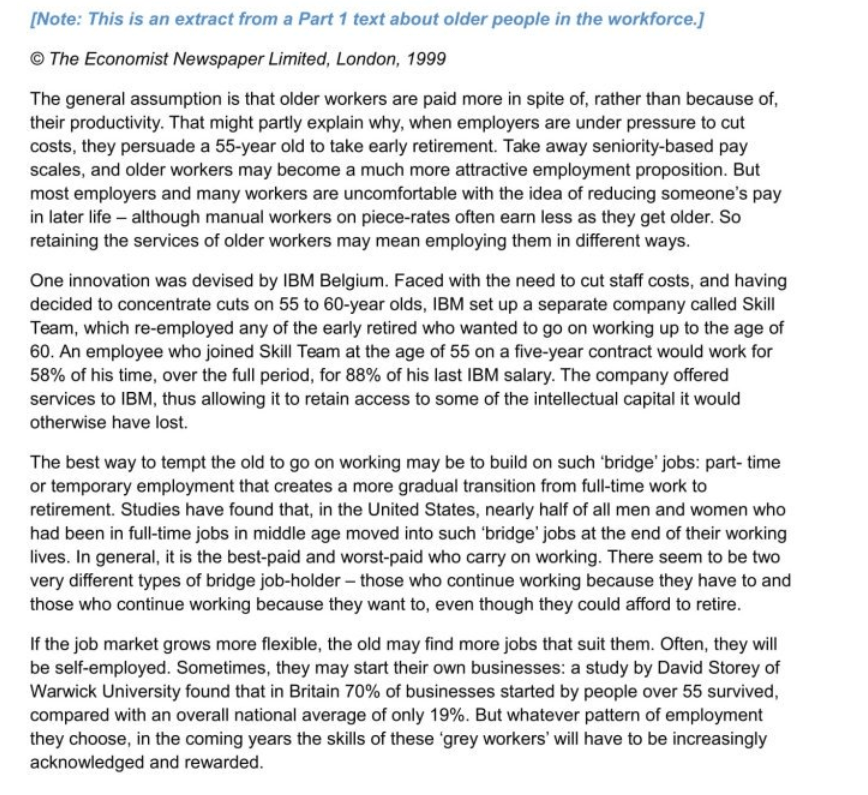
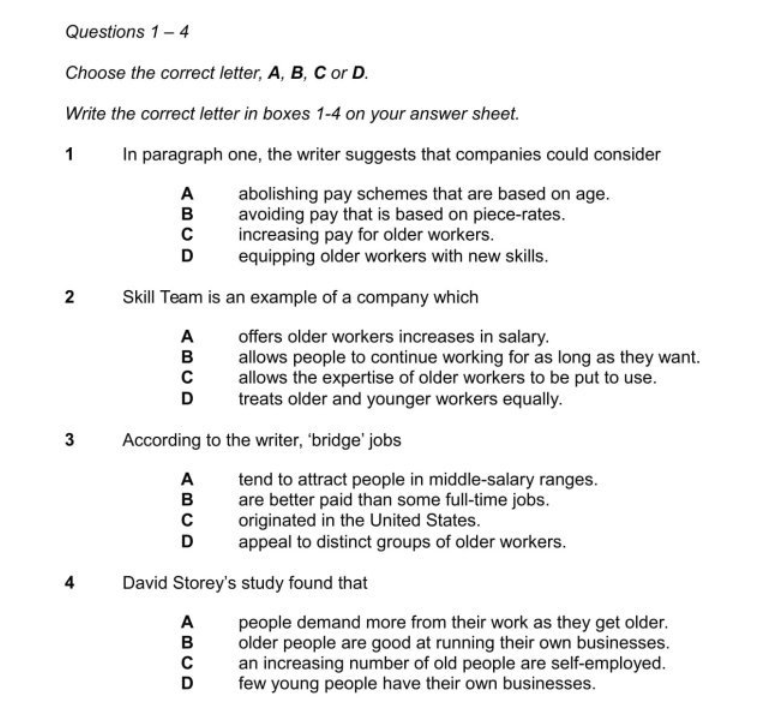
How to answer the questions:
We will go through all the questions one by one and find the correct answers.
1 In paragraph one, the writer suggests that companies could consider
A abolishing pay schemes that are based on age.
B avoiding pay that is based on piece-rates.
C increasing pay for older workers.
D equipping older workers with new skills.
We can clearly see that the word “pay” is repeated in the question options, so we skim the passage and find the part that talks about paying. The question also mentions that it is in paragraph one!

After finding the word “pay,” we have to find the words we highlighted in the answers. As we see, we cannot find the exact phrase, so we have to look for synonyms. We know that the synonym for “abolish” is “take away.”
Take away seniority-based pay scales, and older workers may become a much more attractive employment proposition.
You should double-check and see if the information in the A) answer is the same as the part which you found in this part. After making sure that the other three options are not correct, you can choose your answer.
2 Skill Team is an example of a company which
A offers older workers increases in salary.
B allows people to continue working for as long as they want.
C allows the expertise of older workers to be put to use.
D treats older and younger workers equally.
You should look for the word Skill Team. This is simply a name so there cannot be any synonyms for this.It appears two times in this paragraph so that the answer might be lying right here.

We know there are no apparent keywords in any of the answers, so in such cases, you have to carefully read the paragraph and understand what it says and choose the correct answer. After carefully reading the section and the answers, you can see no information supporting the A, B, and D options. So you know the answer is C. After re-reading the paragraph and making sure it is the correct answer, you can choose it.
3 According to the writer, ‘bridge’ jobs
A tend to attract people in middle-salary ranges.
B are better paid than some full-time jobs.
C originated in the United States.
D appeal to distinct groups of older workers.
After looking for the keyword ‘bridge’ jobs, you can see that it repeats three times in the third paragraph, so the answer should be there.

You have to read the options now and understand what kind of information the question is asking for. You should underline the key concepts. Read the third paragraph in detail and look for the relevant information.
You spot the United States in the text, which is also written in option C. However, after carefully reading the paragraph, you see that the information doesn’t support the 3rd option. The paragraph mentions that “Studies have found that, in the United States, nearly half of all men and women who had been in full-time jobs in middle age moved into such ‘bridge’ jobs at the end of their working lives.” However, option C mentions that the ‘bridge’ jobs have originated from the United States. So, option C isn’t the answer.
You can see that there is no information in the paragraph talking about how much people get paid, so option B automatically gets declined too.
You are now left with two options, A and D. carefully read the last two sentences of the paragraph:
In general, it is the best-paid and worst-paid who carry on working. There seem to be two very different types of bridge job-holder – those who continue working because they have to and those who continue working because they want to, even though they could afford to retire.
As you see, the paragraph only talks about the best-paid and worst-paid workers. It doesn’t mention anything about the middle-salary ranges. So there is no evidence supporting the option A. you are now left with option D. You also can see that it is paraphrased, and the information is the same as mentioned in option D.
4 David Storey’s study found that
A people demand more from their work as they get older.
B older people are good at running their own businesses.
C an increasing number of old people are self-employed.
D few young people have their own businesses.
The easiest way to find the answer to this question is to find the name David Storey. You can find it in the last paragraph.

This is one of the most straightforward questions to find the right answer because there are clear information and keywords in the options. You come across this sentence:
‘‘70% of businesses started by people over 55 survived, compared with an overall national average of only 19%’.
You should re-read the options, and the only one that fits best is option B. ‘Older people are good at running their own businesses.’ There is still some interpretation needed, yet this is the only option that best describes the passage.
So here are the answers:

IELTS Reading Multiple Choice Questions – Example 2
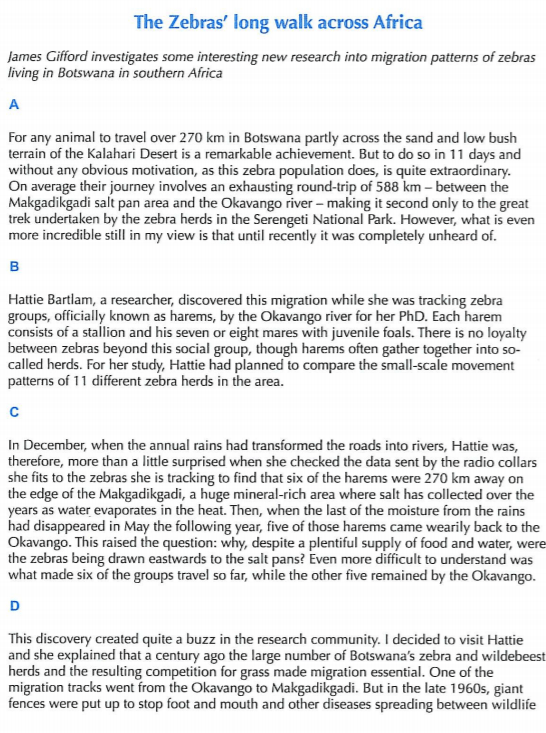
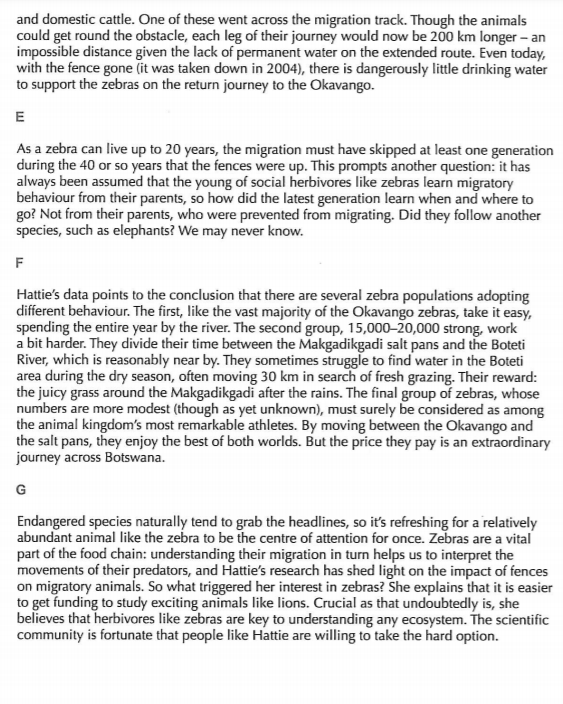
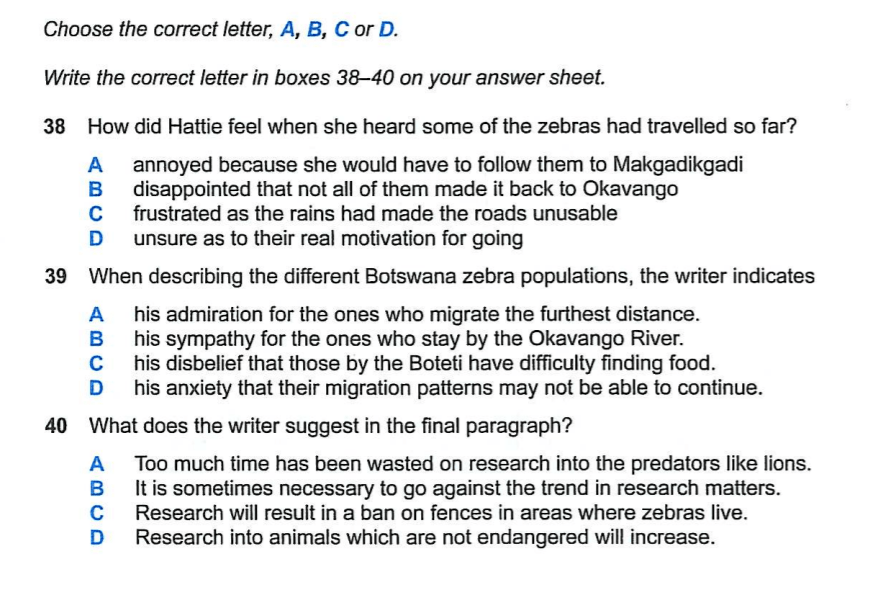
Answers:
38 D
39 A
40 B

